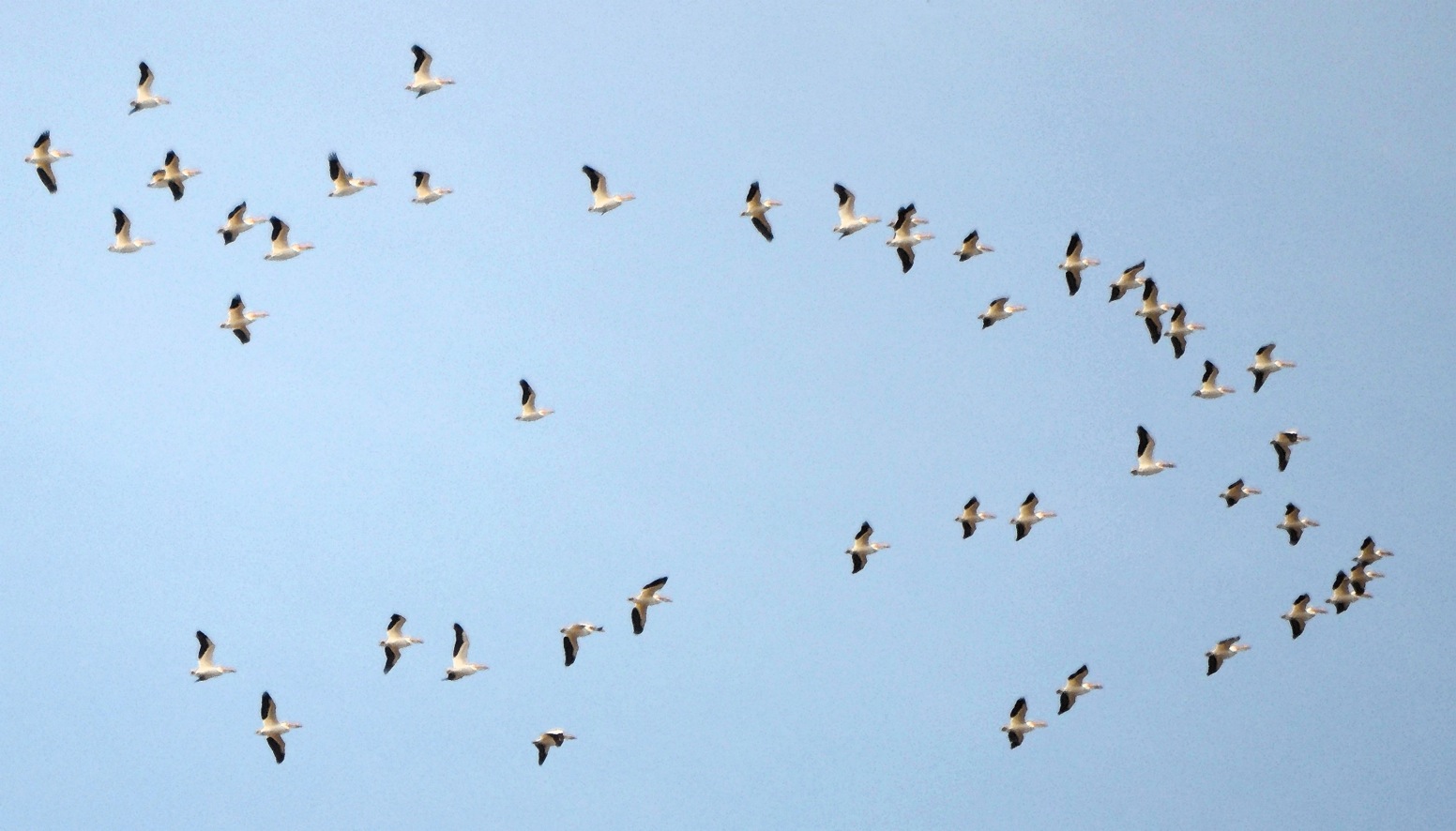It’s started, and the fall exodus of hundreds of millions of birds is becoming apparent at our feeding stations. Fall bird migration takes place over a period of about five months, beginning in early July with shorebirds and male hummingbirds and ending with sparrows and finches in November. The peak period for movement is in September and early October.
Attracting Feathered Migrants

Northern Shoveler by Jeff Birek
This is an exciting time in our yards, as many migrant birds are attracted by our food offerings. Seeds, mealworms, fruits, berries and suet will detain them so we can marvel at these new species as they load up for the long trip ahead.
Water is a major attraction, too, particularly in times of drought. Keeping a healthy, clean feeding and watering area for these migrants helps to ensure a successful voyage to their wintering grounds, which are actually second summering grounds.
Most migrating birds will fly by night. Overhead, on a clear evening, will come faint call notes that echo the unseen movement of birds on their way to winter homes that may lie hundreds or even thousands of miles away. Nighttime provides cool temperatures that allow birds to conserve energy in flight.
Long-Distance Champ
The Arctic Tern probably holds the long-distance migration record. Its migratory route is 25,000 miles long, round trip. Our juncos and siskins need only to travel from the mountains to our backyards to reach their wintering range.
So while many birds leave our area for the winter, many other species move into our area during the colder season. We have year-round robins here in Colorado. The spring and summer robins head south for the winter, but we get a group of northern and Canadian robins that winter here.

American White Pelicans by Emily Gubler
Birds use many cues to guide them through migration. They are sensitive to the magnetic fields of the earth. They can hear the ultrasonic sounds created by the oceans on both coasts. Bird migration is also influenced by day-length, the stars and visual landmarks.
We are learning more and more about the intricacies of seasonal flight. Some birds have their vital organs shrink or disappear to lighten the load for their migratory flight. They, then, re-grow these organs upon their arrival at their destinations.
The flight schedule below represents a heads up concerning what to be looking for at what time. It’s amazing to see these birds checking their datebooks for their departure days.
Departures*
- Sept. 13 – Bullock’s Oriole
- Sept. 19 – Lark Bunting
- Sept. 19 – Yellow Warbler
- Sept. 21 – Broad-tailed Hummingbird
- Sept. 23 – Western Kingbird
- Oct. 9 – Swainson’s Hawk
- Oct. 10 – Barn Swallow
- Oct. 14 – House Wren
- Oct. 20 – Great Blue Heron
- Oct. 25 – Common Grackle
- Oct. 30 – Mourning Dove
- Nov. 5 – Mountain Bluebird
- Nov. 15 – Killdeer
Arrivals*
- Aug. 31 – Spotted Towhee
- Sept. 1 – Redhead
- Sept. 5 – Green-winged Teal
- Sept. 5 – American Widgeon
- Sept. 10 – Sharp-shinned Hawk
- Sept. 12 – Cooper’s Hawk
- Sept. 12 – Cedar Waxwing
- Sept. 14 – Ruby-crowned Kinglet
- Sept. 15 – Gadwall
- Sept. 15 – Northern Shoveler
- Oct. 1 – Rough-legged Hawk
- Oct. 6 – Dark-eyed Junco
- Oct. 12 – Common Merganser
*Dates represent average arrival or departure date for Denver and the eastern plains immediately surrounding the metro area. Information taken from “A Birder’s Guide to Denver and Eastern Colorado” by James A. Lane and Harold Holt (1979 edition). Dates may have changed since the publication of this book, as a growing number of studies have documented shifts in migration timing in response to climate change.
Whatever talents birds possess, their extraordinary abilities are remarkable and little understood. We should feel a certain awe when birds appear in our yards each spring and fall with their uncanny precision. To help the birds with their incredible journeys, make certain that your backyard habitat is suitable to provide them with the sustenance necessary to have a safe flight there and back.
For plenty of friendly, free advice on attracting the most beautiful birds in the world, call 303-467-2644.
~ David Menough, Owner of Wild Birds Unlimited of Arvada
David and his wife, Kathy, own the Wild Birds Unlimited store at the southeast corner of 88th and Wadsworth in Arvada. WBU stores specialize in bird feeders, birdbaths, houses, field guides, nature-related gifts, binoculars and quality seed blends.
Other WBU Front Range locations:
- Wild Birds Unlimited of Denver – 2720 S. Wadsworth Blvd.
- Wild Birds Unlimited of Fort Collins – 3636 S. College Ave.
BirdTalk migrating to noon! Tune in to David and Scott Menough at noon on Saturdays for BirdTalk Radio on 710 KNUS. They will broadcast live from their stores in Arvada and Denver.


